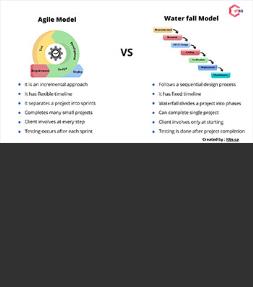

The PMI Registered Education Provider logo is a registered mark of the Project Management Institute, Inc. PMI is a registered mark of the Project Management Institute, Inc.

PMP is a registered mark of the Project Management Institute, Inc. All rights reserved.ĬAPM is a registered mark of the Project Management Institute, Inc. The Swirl logo™ is a trade mark of AXELOS Limited, used under permission of AXELOS Limited. PRINCE2®, PRINCE2 Agile®, MSP®, P3O®, M_o_R®, MoV®, MoP® and ITIL® are registered trademarks of AXELOS Limited, used under permission of AXELOS Limited. The company's main country of operation is the United Kingdom.ĭesigned and Developed by GML Consulting. Registered Office: ILX Group, 3rd Floor, 86-90 Paul Street, London, EC2A 4NE. The right experience, education and competencies will lead to successful projects.
COMPARING AGILE VS WATERFALL PROJECT MANAGEMENT COURSE PROFESSIONAL
A Project Management Professional (PMP) certification will help improve the way a project manager progresses a project. At ILX, our project management courses are recognised worldwide and backed by the Project Management Institute. In fact, PRINCE2 and PMP, which are popular for traditional-style projects, have only become more compatible with Agile methods with each new update.īefore choosing a methodology, it’s important to understand what your project requirements are and the relationship with your customer. Easily compatible with other methodologiesĪs you can see, while some methodologies are strictly Agile, most standard bearers don’t design their methodologies to be Waterfall-only.

Small teams break their work into short ‘sprints’ and track progress in 15-minute meetings called ‘scrums’Ī broad body of knowledge about projects. Not a strict framework for running projects The PRINCE2 framework interpreted to work better with Agile methodsĪ standardised and evolving set of project management principles. Process-based method for any type of project. open-ended and tailorable to any type of project. Many of them aren’t strictly Agile or Waterfall, but are instead ‘Agnostic’, i.e. Many organisations have developed their own set practices. There’s no single Agile or Waterfall way of carrying out a project. Because of this, Agile needs a high level of involvement from the customer throughout the project. Work on the project can be evaluated and reviewed by the customer and the project team via end-of-sprint demos. Each sprint has a list of deliverables which are prioritised by business value, decided by the customer. The Agile methodology is iterative and takes a team-based approach, where time is boxed into phases, or ‘sprints’, that have a specific duration. Typically, documentation is an important aspect of the Waterfall methodology, particularly as each stage must be reviewed and approved by the customer on completion before the next stage starts. The main basis of this methodology is that you have to complete the current phase of the project before starting the next. Waterfall was arguably introduced by Winston W. The Waterfall project management methodology is more traditional in its approach, being linear in design and where progress goes in one direction downwards. It should build team collaboration, iterative development and change recognition. The purpose of Agile is to provide a structure that’s clear and measurable. The Agile project management methodology is based around the Agile Manifesto, written in 2001. These projects are built on collaboration by teams that are cross-functional and self-organised. Let’s compare the two broad methodologies, Agile and Waterfall.Īgile is principally used for projects that are incremental and iterative.

Each methodology has a different strategy that addresses the different issues arising throughout the course of a project. But where do you start and how do you know which methodology is right for your project?Įssentially, a project management methodology is a set of processes that help project managers complete project tasks. When managing projects, choosing a methodology that is going to work for the project, and the team, is crucial.


 0 kommentar(er)
0 kommentar(er)
